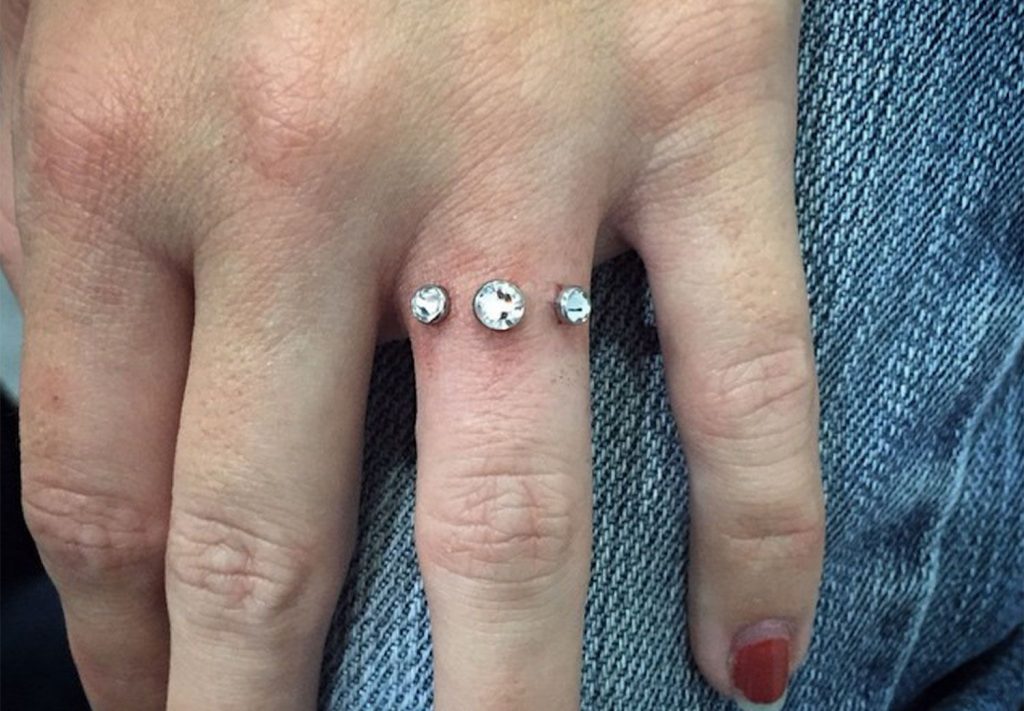An engagement ring is so expected. Why not show off your love in a more permanent and unique way? This is the exact thought process behind the engagement ring piercing trend.
An engagement ring piercing is literally what it sounds like. Instead of a ring, the diamond or whatever gemstone you desire is embedded into the skin of the ring finger.
It’s the same process as getting a dermal piercing, which is any single-entry piercing on a flat surface of your body like the collarbone, neck, cheeks or back.
Using a dermal punch, the piercing professional creates a hole in the epidermis of the finger then inserts an anchor into the skin layer below the dermis. The jewelled top, typicaly a diamond or gemstone, is fitted into the anchor.
Like any other piercing, this one will come with some pain, the level will depend on your own pain tolerance. However, it shouldn’t hurt more than a piercing on any other part of the body. It takes several months to heal, during which you may experience some fluid secretions.
Tattoers do warn that this piercing comes with a high risk. Besides the risk of infection, the finger is a high traffic area as you use your hands a lot throughout the day. Constant friction against the piercing will irritate it.
Because a dermal piercing has a single entry point, meaning the piercing enters and exits from the same hole, the rejection rate is quite high, which can lead to bad scarring.
The actual process of getting the piercing is also quite risky, because the finger has so many muscles and nerves. If the piercing is in the dermis then it should not be an issue but any deeper and you run the risk of affecting vital structures in the finger. Considering fingers have little fat underneath the skin, the piercing may hit muscle or bone, which can result in nerve damage.
If you do decide to go through with this piercing, there is a lot of aftercare. It is important to keep the finger covered as it heels to avoid it getting caught in anything. Piercers recommend twice-daily soaks in warm water and sea salt or warm water and vinegar. You can also use an antiseptic to wipe away any crusty secretions.
Feature image: Pinterest




















